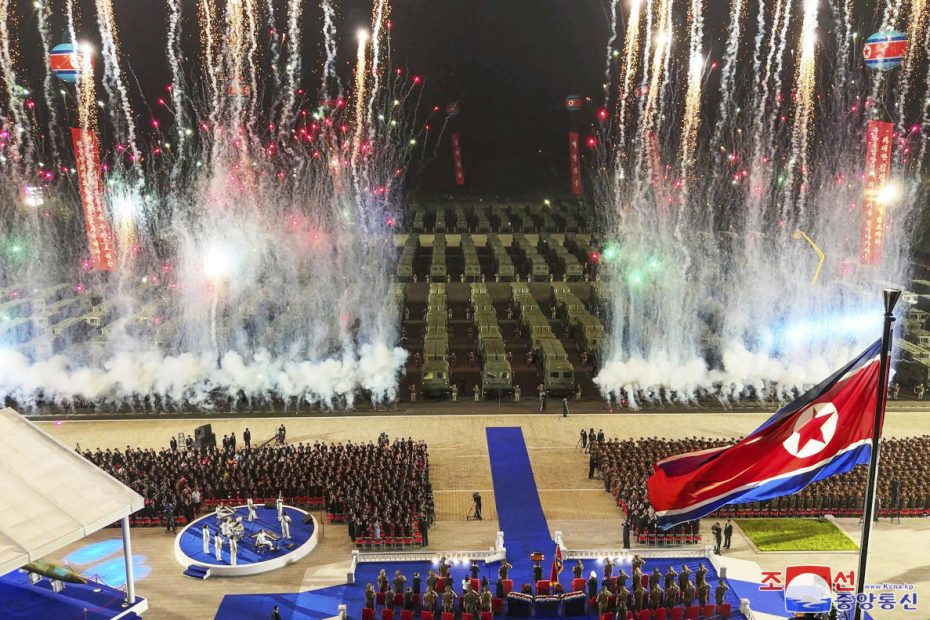SEOUL, South Korea (AP) — North Korea celebrated the delivery of 250 nuclear-capable missile launchers to frontline military units at a ceremony attended by leader Kim Jong-un called for a continued expansion of his military's nuclear program to counter perceived US threats, state media reported Monday.
Concerns over Kim's nuclear program have grown as he has indicated he plans to deploy nuclear weapons along North Korea's border with South Korea and has authorized his military to respond with pre-emptive nuclear strikes if they deem the leaders threatened.
According to North Korea's official Korean Central News Agency, the launchers are newly produced by the country's munitions factories and are designed to fire “tactical” ballistic missiles, a term used for systems that can deliver lower-yield nuclear weapons.
Kim said at Sunday's event in Pyongyang that the new launchers would give his frontline units “overwhelming” firepower over South Korea and make the deployment of tactical nuclear weapons more practical and efficient. Photos from state media showed rows of army-green launchers filling a large street with what appeared to be thousands of spectators watching the event, which included fireworks.
North Korea is expanding its range of short-range, mobile weapons designed to evade South Korea's missile defenses, while also pursuing intercontinental ballistic missiles that would reach the U.S. mainland.
Kim's escalating weapons tests and threats are widely seen as an attempt to pressure the United States to accept the idea of North Korea as a nuclear power and to end U.S.-led sanctions imposed on North Korea over its nuclear program. North Korea could also be trying to ratchet up tensions in a U.S. election year, experts say.
Kim has recently used Russia’s war on Ukraine as a distraction to further accelerate his weapons development. In response, the United States, South Korea and Japan have expanded their joint military exercises and sharpened their nuclear deterrence strategies, which are built around strategic U.S. military assets. Lee Sung Joon, spokesman for South Korea’s Joint Chiefs of Staff, said at a briefing that the South Korean and U.S. militaries were closely analyzing North Korea’s weapons development and that more oversight was needed to confirm the operational readiness of the missile systems shown Sunday. He did not provide a specific assessment of whether the systems could be deployed.
Lee said the missiles likely have a shorter range than some of North Korea's most powerful short-range ballistic missiles, which have been shown to have a range of more than 600 kilometers (372 miles).
North Korea has unveiled a new missile in recent months, the Hwasong-11, which analysts say can fly up to 100 kilometers (62 miles). If deployed in frontline areas, the missiles could theoretically cover large swaths of South Korea’s metropolitan area, home to about half of the country’s 51 million people.
In his speech at Sunday's event, Kim called on his country to brace itself for a prolonged confrontation with the United States and urged a ruthless expansion of military power. He justified his military buildup as a counter to the “increasingly barbaric” military cooperation between the United States and its regional allies, which he said now exhibited the characteristics of a “nuclear-based military bloc.”
“It is our choice to either engage in dialogue or confrontation, but our lesson and conclusion from the past 30 years … is that we must be better prepared for confrontation,” Kim said.
“The United States we are dealing with is not just a government that comes and goes after a few years, but a hostile nation that our children and grandchildren will have to deal with for generations to come and that also illustrates the need to continually improve our self-defense capabilities.”
Kim also said the decision to hold the arms ceremony as the country tried to recover from the disastrous floods showed the determination to “continue to strengthen our national defense force without stagnation, under any circumstances.”
Flooding in late July left thousands of homes and large swaths of farmland submerged in areas close to the border with China.
Russia has offered flood aid to North Korea, another sign of the expanding ties between the two countries. Kim has made Russia a priority in recent months as he pursues a foreign policy focused on expanding ties with countries that confront Washington, embracing the idea of a “new Cold War” and trying to present a united front in Putin’s broader conflicts with the West.

